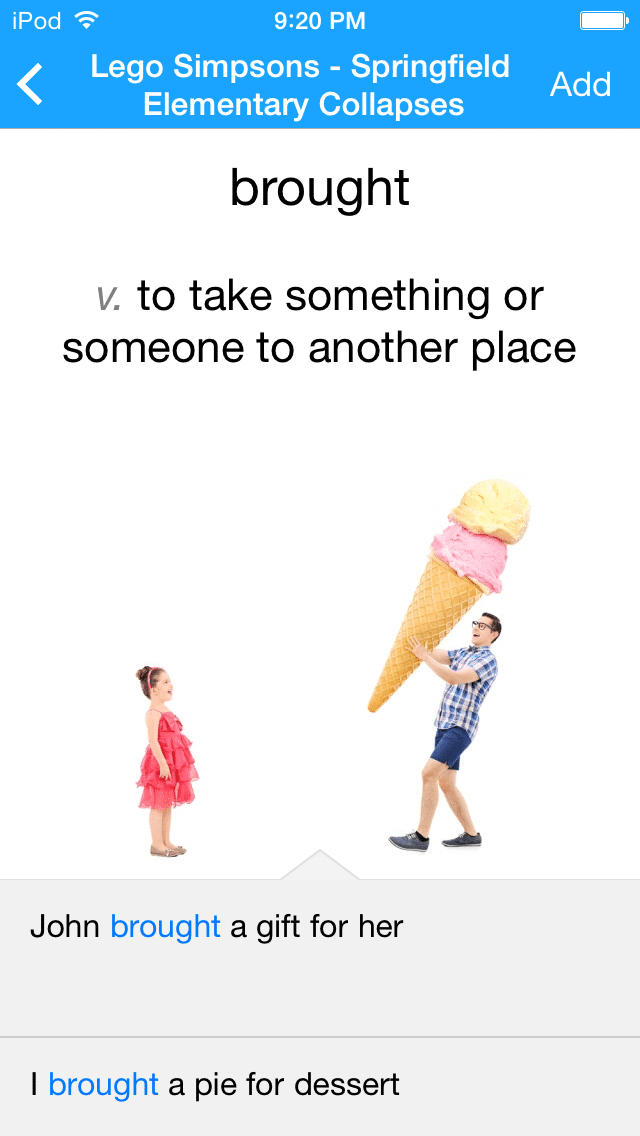ESL 509 Summer 2020
Monday, July 27, 2020
Podcast Review
Monday, July 6, 2020
Collaboration Is Key

Have you ever heard the phrase, "your kids", said by a general to a special education teacher? Any time I do, I cannot help but cringe. Imagine being that student the teacher is talking about. You might feel as if you didn't belong in both classrooms, or unaccepted by one. For ELL's, and all students, inclusion and collaboration is key.
An article popped up on my Google Alerts entitled, ELLs are Everyone's Kids, and right now that is something that everyone needs to be reminded of. Whether we are struggling to modify during online learning or how to work on a project collaboratively with the ESL teacher, we need to know that we are a team. With the world at its divide, we need to teach our children about inclusiveness and collaboration.
How does this relate to ELL and technology? Easy. We need to provide our students with vast amounts of tools and technology that they can use to grow as learners- intellectually, emotionally, socially, etc. As teachers, we need to find what works best for our students, all students, not just the majority. Tools provided by companies such as Google allow for just that!
Google Slides and Docs allow students to work on papers and presentations with others, regardless of the location! It have built in voice-to-text, allowing students ease of usage. We have spent the past few weeks in class discussing applications that our students could use in the classroom. Google apps encompasses many of the qualities we prefer, while allowing students the opportunity to be included and work with their peers. I am looking forward to using them in the fall.
If you are interested in reading the article that caught my attention this week, please click here.
Monday, June 29, 2020
Writing With Entertainment In Mind
In my three years of teaching, I can count on one hand how
many students would say writing is their favorite subject. Unless it is time to
work on poetry, I can honestly say that writing is not my favorite to teach.
This course has made me think of how my students really feel when I ask them to
brainstorm and put their thoughts into words. For some, this task may be easy.
For others, it won’t be as much. I wonder how my ELL’s feel about it?
FluentU
has provided me this week with wonderful ideas to add to my writing instruction
this year. “ESL writing should be fun and encouraging, though many of us
can remember the boring essays we had to scribble out in school. So break the
mold and put a dash of excitement into your writing lesson.” Some of the ideas
are: having students tweet, writing emails, creating advertisements, writing
informative reports, and crafting a newsletter. I do have my students create
newsletters, but that is about it. We do one advertisement activity a year, but
that is in the form of a brochure. It is a shame that I stuck in my ways of
simply writing a piece, instead of allowing my kids to explore their
creativity, as well. These activities foster creativity, communication,
critical thinking, and collaboration. All of these are things that we learned
are important for working with students, including ELLs.
This
search notification is making me excited to update my writing instruction!
Here is the FluentU website if you would like to read more
about it! https://www.fluentu.com/blog/educator-english/esl-writing-practice/
 |
Resource
Seifert, S. (2020, March 22). 5 Activities Guaranteed to Get
Your Students Excited About ESL Writing Practice. Retrieved June 29, 2020, from
https://www.fluentu.com/blog/educator-english/esl-writing-practice/
Monday, June 22, 2020
CLOSE Classroom

Do you use
CLOSE Reading in your classroom? At the elementary level, this concept is huge.
During the second week of school, we work through a Scholastic News article and
break it down using this strategy. Thankfully, the company sends out posters
each year reviewing the three majors steps- 1)Get the Gist 2) Dig Deeper 3) Put
it all together. Now, just because it is a great strategy, doesn’t mean that my
students enjoy it! However, we try and make it as fun as we can. I always think
about how this reading strategy is great for my students. However, I never
thought about how it would benefit my ELL’s.
Allowing students to have multiple
rounds of exposure to a text helps their comprehension. Providing them with
ample time to break down key words is a huge benefit for ELL’s. There are many
steps that need to be implemented to ensure success. “Using close reading of
texts with ELLs presents more challenges beyond balancing building background
knowledge with working with the actual text. Such challenges for educators of
ELLs include choosing appropriate grade level texts, supplying supplementary
texts at different reading levels, scaffolding instruction, and creating text
depending questions that ELLs can access. Successful close reading with ELLs
requires a more defined skill set and targeted training for all educators of
ELLs” (Fenner, 2013).
There are strategies that I already
implement while teaching CLOSE Reading, such as “book notes”, which can be
purchased here.
Thanks to my Google Alerts, I now know that I need to teach myself on how to
better implement this strategy for ELL’s. I did find these 7 steps to follow on
middleweb.com:
► Make sure that nonfiction text, as
well as fiction, is well-represented in the reading material you
use with, and is available to, your students.
► Teach students to annotate text, no
matter how simple or “complex” it might be, using key reading strategies like
summarizing, asking questions, and identifying the main idea. Focus on only one
or two reading strategies during each rereading of the text. In addition, teach
students to use metacognition to self-monitor their comprehension so they know
what strategies can help them in what situations. Remember: the end-goal of
close reading is to prepare students to transfer their skills to situations
when you, the teacher, are not providing guidance.
► Recognize that the common teaching
process of “I do, We do, You do” is probably not sufficient for English
Language Learners and that additional scaffolding steps will likely be
required.
► Ask text-dependent questions that
require students to look for evidence in what they are reading.
► Use the common, but not
text-dependent, strategy known as “text-to-self” selectively. Asking students
to connect the text to their own experiences can increase student motivation,
but doesn’t necessarily improve comprehension and understanding. However, if
carefully constructed and monitored, text-to-self questions can provide one way
to engage hesitant readers and writers as a prelude to answering more
challenging text-dependent questions.
► Be strategic when spending time in
prereading activities to provide background knowledge. In other words, make
sure that it is a necessary tool to help students access the text, and not
providing excess information and acting a substitute for what could be learned
from the text itself.
► Plan to gradually increase the
complexity of texts you use with students during the year. This doesn’t mean
that it must be an uninterrupted incline.
An additional
suggestion is that teachers should not do close reading of a text in isolation
– it should be done in the context of a broader unit that includes numerous
other learning activities.
I am looking forward to continuing
my research on this topic, and learning together on how to best implement this
strategy into the classroom.
Resources
Ferlazzo, L.
(2016, April 10). Ideas for "Close Reading" with ELL Students.
Retrieved June 22, 2020, from
https://www.middleweb.com/29237/ideas-for-close-reading-with-ell-students/
Fenner, D.
(2019, December 13). Background Knowledge: A Key to Close Reading with ELLs.
Retrieved June 22, 2020, from
https://www.colorincolorado.org/blog/background-knowledge-key-close-reading-ells
Thursday, June 18, 2020
Seesawing Your Teaching
My school district recently provided all staff with memberships to Seesaw Premium- a classroom blog, where teachers can provide activities and communication with students and parents. I love the app, but we never received much training on it, making me learn as I went. I was shocked to see it pop up as a resource on my Google Alerts this week. Turns out, Seesaw has many features put into place for Translations and ESL communities. Knowing this, I am very excited to implement it next year!
Seesaw creates a Welcome Letter for you to send to parents at the beginning of each year. Little did I know, they provide translations of this letter for you, found here: https://help.seesaw.me/hc/en-us/articles/206935916-Translations-of-Seesaw-resources
This is a great tool to practice listening, reading, and writing on. Seesaw allows students to create activities and "dig deeper" into content, all while being easily shareable with family and friends. There are lessons pre-made for ELL learners, as well! This app is helpful for educators as well, because it shows you exactly where your students are at. You can provide quick feedback, make private notes, and know exactly what skills your students need further assistance with.
If you are interested in reading more about Seesaw ELL, you can find it here: https://web.seesaw.me/ells I am very happy that I learned this information this week. My colleagues will be very excited when I share it with them, as well!

Thursday, June 11, 2020
Flip Your Room & Mindset

When I started my teaching career, I tried my best to implement the Flipped Classroom model. "While there is no one model, the core idea is to flip the common instructional approach: With teacher-created videos and interactive lessons, instruction that used to occur in class is now accessed at home, in advance of class. Class becomes the place to work through problems, advance concepts, and engage in collaborative learning. Most importantly, all aspects of instruction can be rethought to best maximize the scarcest learning resource—time" (Tucker, 2012). I loved this model, as did my students, but it was extremely time consuming and overwhelming. I constantly made my own videos, instead of using sites online. I quickly became burnt out and stopped.
My second year was completed without a single Flipped Classroom attempt. This year, I did a few lessons, but then became overwhelmed and stopped again. I know that this upcoming year, I will stick to it, use online resources, and complete the model. However, what is the best way to follow this model with ELL students in mind?
My Google Tags this week taught me about an application called FluentU. It brings "authentic content within reach by providing interactive captions and in-context definitions right on-screen. For example, if a student taps on the word “brought,” they’ll see this:
This interaction application provides real-time learning for students in a new way! It will also create flash cards for key and unknown words from the video! We have learned how important it is to provide students with multiple means of exposure. This app will help with just that!
Resources
Tuesday, June 2, 2020
Vocabulary Spotlight

"So many things make learning English difficult and confusing. Its grammar structure, its spelling, meanings and rules that contradict existing rules are difficult to master" (DayTranslations, 2018).
Working with ELL students is new for me. This school year when I learned that I would have three students in my classroom that were in the ESL program, I automatically grew anxious. I thought to myself, how much English do they know? Should I label everything in my room? Each child is different, which means that each level of support is different. One thing that stays the same is fact that we should assist students with the English language and vocabulary.
"Research shows that students need to interact with a word multiple times and in multiple ways in order to master that word in incorporate it into their vocabulary. Additionally, ELLs need more explicit instruction in vocabulary- especially academic vocabulary- through predictable routines and activities" (Brown University). This week, I learned about multiple vocabulary teaching methods and games. The one that I would like to highlight is the Five-Day Vocabulary.
For this method/protocol, you would pick five-ten words from your current academic unit and apply them. Students should define the word in their own language, use it in proper context, provide figurative language, use non linguistic representation, explore potential homo(phone/graphs) and other higher level thinking options. The protocol states that you focus on one target per day. This slow, continuous routine will allow students to learn the definitions of a word and understand how to use it in their every day vocabulary.
There are multiple templates that you can download for this protocol (see below), but, vocabulary sites, such as Spelling City, have these types of practices embedded. I also am a Seesaw Ambassador, so I could upload a template onto an activity that would be reused weekly. Paper and pencil activities can easily be uploaded onto technology, allowing students to practice necessary skills and follow technology standards.
I am looking forward to sharing another educational ESL strategy with you next week!
TPT Example: https://www.teacherspayteachers.com/Product/Five-Day-Vocabulary-A-Vocabulary-Learning-Protocol-5226842
Resources
Day Translations. (2019, August 6). Why Learning English is Difficult. Retrieved June 2, 2020, from https://www.daytranslations.com/blog/learning-english-hard/#:~:text=So many things make learning,rules are difficult to master.&text=Learning English is definitely challenging,difficult to learn than English.
WeAreTeachers Staff on November 29, 2017 .contest-social .share-links svg. (2017, November 30). 11 Vocab Games to Make the Learning Stick. Retrieved June 2, 2020, from https://www.weareteachers.com/11-vocab-review-games-to-make-the-learning-stick/
Podcast Review
Here is my review on the ESL Podcasts. They can be found on my Symbaloo site: 1) ESL Teacher Talk- This podcast is hosted by educators who h...
-
" So many things make learning English difficult and confusing. Its grammar structure, its spelling, meanings and rules that cont...
-
When I started my teaching career, I tried my best to implement the Flipped Classroom model. " While there is no one model, the...
